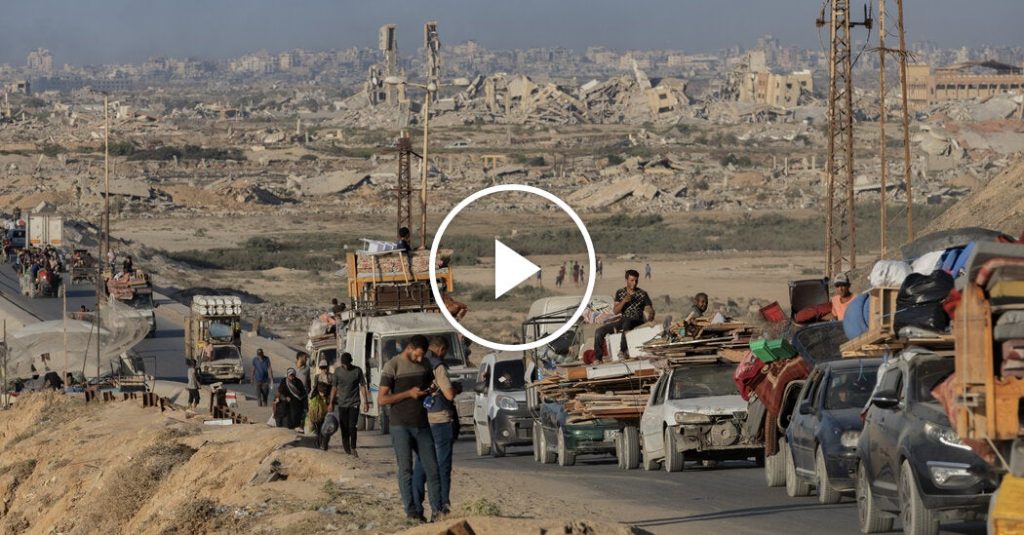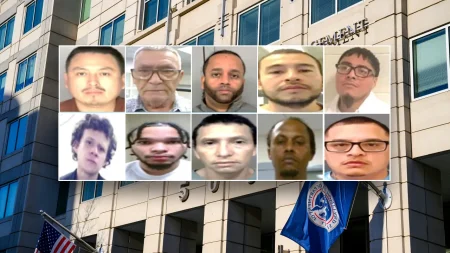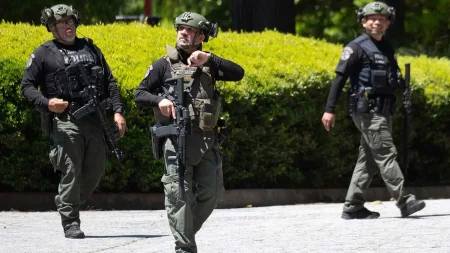Displaced by War: One Palestinian’s Life Beside a Landfill After Gaza City Evacuation
Forced from Home, Finding Shelter in Harsh Conditions
By Jason Carter | Senior International Correspondent
September 12, 2025
In the southern outskirts of Nuseirat Camp, where the stench of decomposing waste permeates the air, 38-year-old Omar al-Far has established what he reluctantly calls home—a makeshift tent pitched precariously close to a sprawling landfill. Al-Far, formerly a shopkeeper in Gaza City’s bustling commercial district, represents just one story among hundreds of thousands of Palestinians displaced during the ongoing conflict, forced to flee their homes following Israeli evacuation orders that emptied Gaza City nearly ten months ago. His journey from urban resident to landfill dweller illustrates the harsh realities faced by internally displaced persons in one of the world’s most densely populated and contested territories.
“I never imagined I would live beside garbage,” al-Far told us, his voice barely audible over the rumble of waste collection trucks arriving to dump their loads mere meters from his tent. “In Gaza City, I had a small apartment above my shop. It wasn’t luxurious, but it was clean, it was mine.” The evacuation orders came suddenly last November, giving residents like al-Far little time to gather belongings before leaving. Initially, he sought refuge with relatives in Khan Younis, but as the conflict intensified and more areas came under evacuation orders, options dwindled. “Every place became overcrowded. Rents quadrupled overnight. With my savings depleted and my shop gone, I couldn’t afford even the most basic accommodation,” he explained, gesturing toward the blue tarpaulin structure that now shelters him from the elements—though not from the persistent odor of the adjacent landfill.
Economic Devastation Compounds Displacement Crisis
The housing crisis facing displaced Gazans represents just one dimension of the broader humanitarian emergency that has unfolded since the evacuation orders emptied Gaza City. Economic data from international relief organizations indicates that approximately 85% of Gaza’s pre-conflict economic activity has ceased, with unemployment rates soaring above 70% in most areas. For al-Far, like thousands of others, the loss of livelihood has been as devastating as the loss of home. “I built my shop over twenty years, starting with just a small cart selling household items. Eventually, I had three employees,” he recalled, showing a photo saved on his cracked smartphone—perhaps his most valuable remaining possession. The image shows a modest but well-stocked shop with bright lighting and neatly arranged products, a stark contrast to his current surroundings.
Humanitarian organizations have struggled to address the scale of need. The UN Relief and Works Agency (UNRWA) reports that official displacement camps are operating at 300% capacity, forcing many like al-Far to seek shelter in informal settlements that lack basic infrastructure. Dr. Maryam Khalidi, a coordinator with Médecins Sans Frontières working in central Gaza, described the health implications of such living conditions: “We’re seeing alarming increases in respiratory infections, gastrointestinal diseases, and skin conditions among those living near waste disposal sites. These locations lack clean water, sanitation facilities, and are breeding grounds for disease vectors like rats and mosquitoes.” Despite these risks, al-Far feels he has no alternative. “The formal camps have no space. At least here, no one forces me to leave. I have staked my small claim to this terrible place because there is nowhere else to go.”
Daily Life Beside the Waste: Survival and Adaptation
Life beside the landfill follows its own rhythm, dictated by necessity rather than choice. Al-Far rises before dawn, when the air is marginally less putrid, to collect relatively clean water from a distribution point three kilometers away. “I make two trips each morning, carrying as much as my back can bear,” he said, showing the plastic containers he uses—former chemical containers that he has meticulously cleaned. By mid-morning, he joins other displaced persons who comb through fresh garbage deliveries, searching for salvageable items: metal to sell to scrap dealers, discarded food that might still be edible, clothing that can be washed and worn. “I never thought I would become a garbage picker,” al-Far said, his eyes momentarily downcast before meeting the interviewer’s gaze with renewed determination. “But dignity now means survival. I must do what is necessary.”
The landfill’s periphery has gradually transformed into an informal settlement housing approximately 120 people in similar circumstances to al-Far. They have established their own rudimentary governance system—assigning areas for waste picking to avoid conflicts, organizing collective security watches at night, and pooling resources when possible. Fatima Rahal, a 42-year-old former school administrator who lives in a tent fifty meters from al-Far’s, has emerged as an unofficial community leader. “We were strangers from different parts of Gaza City, but now we have become like family,” she explained. “When Omar was sick last month with what we think was dysentery, everyone contributed something—medicine, clean water, someone to watch his tent.” This improvised community represents a poignant example of resilience amid catastrophic circumstances, as displaced Gazans recreate social bonds and support systems that were shattered by conflict and evacuation.
Health Concerns and Environmental Justice
The environmental health implications of living beside an active landfill cannot be overstated. Dr. Ibrahim Nasser, an environmental health specialist with the Palestinian Environmental Quality Authority, expressed serious concerns about the situation: “These landfills were never designed for human proximity. They contain not just household waste but also industrial by-products, medical waste, and construction debris containing hazardous materials.” Tests conducted by his team revealed elevated levels of methane gas, hydrogen sulfide, and leachate contamination in groundwater near several landfill sites where displaced persons have settled. “The long-term health effects could include chronic respiratory conditions, increased cancer risk, and neurological impacts,” Dr. Nasser warned, adding that children and the elderly are particularly vulnerable.
For al-Far, these abstract health risks feel secondary to immediate survival needs. “Of course I worry about getting sick. But what choice do I have? To be homeless in the street instead?” he asked rhetorically. He has developed his own mitigation strategies—covering his face with a damp cloth when the smell becomes overwhelming, boiling all water before consumption, and creating a small raised platform inside his tent to avoid ground contact during sleep. These measures provide limited protection but reflect al-Far’s determination to maintain some control over his circumstances. When asked about his hopes for the future, al-Far’s response revealed both resignation and resilience: “I no longer think in terms of years or even months. I think about surviving today, then tomorrow. But yes, I still hope—to return to Gaza City if it becomes possible, to rebuild something of what I lost. Until then, I adapt. What else can a human do?”
International Response and the Path Forward
The international humanitarian response to Gaza’s displacement crisis has been complicated by access restrictions, funding shortfalls, and the sheer scale of need. According to the latest UN Office for the Coordination of Humanitarian Affairs (OCHA) report, only 42% of the required humanitarian funding for Gaza has been secured for 2025, leaving critical gaps in shelter, food security, and healthcare provision. Diplomatic efforts to facilitate returns to evacuated areas have stalled repeatedly, leaving people like al-Far in protracted displacement with diminishing prospects for resolution. “We hear announcements, promises, statements of concern,” al-Far observed with noticeable weariness. “But my reality remains unchanged. Words do not build homes or restore livelihoods.”
As night falls over the landfill, al-Far lights a small oil lamp inside his tent—a luxury of sorts, purchased with money earned from selling collected scrap metal. The flickering light illuminates a carefully arranged space: a thin mattress covered with a relatively clean blanket, a shelf fashioned from salvaged wood holding his few possessions, and most prominently, a framed photograph of his family standing proudly before his former shop in Gaza City. “This is what I look at each night before sleeping,” he said, gently touching the frame. “It reminds me that another life is possible, that this existence beside the garbage is not who I am, merely where circumstances have placed me for now.” As international attention shifts to newer crises and political solutions remain elusive, it is this determined maintenance of identity and dignity—even beside a landfill—that characterizes not just Omar al-Far’s story, but the resilience of displaced Palestinians throughout Gaza’s ongoing humanitarian emergency.











